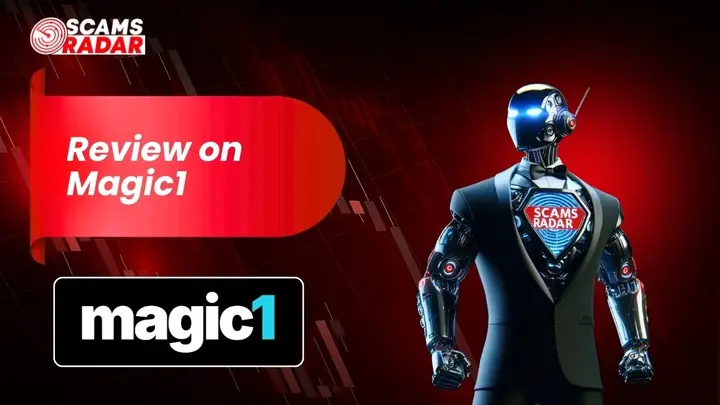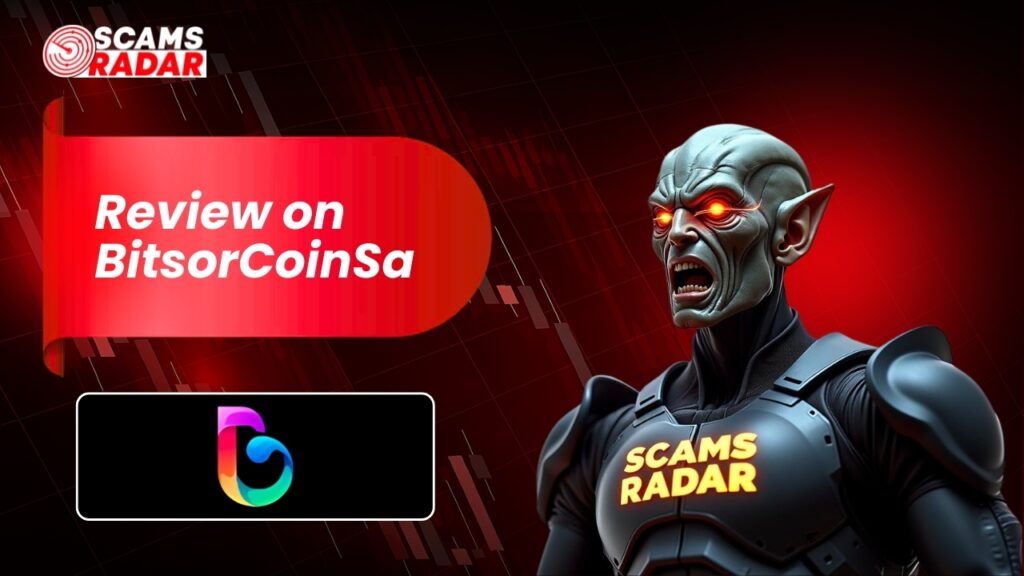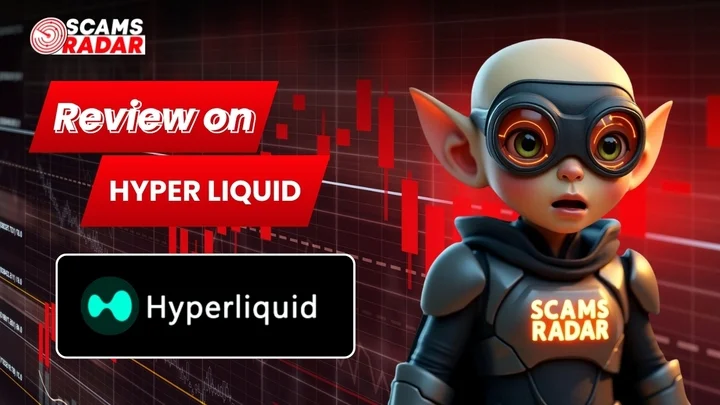Lucky Ant Trading Review: Is It Safe and Legit?
This Lucky Ant Trading review examines the platform’s legitimacy, ownership, compensation plan, and risks. For an in-depth scam analysis, visit Scams Radar for a detailed review.
Lucky Ant Trading, accessible at luckyantfxgroup.com, operates as a forex and CFD broker. While it promises investment opportunities, concerns about transparency, regulatory oversight, and unsustainable claims raise doubts. Read on to explore whether luckyanttrading.com is safe, covering features, compensation structure, security, and more.

Table of Contents

Overview of Lucky Ant Trading Platform
Lucky Ant Trading offers forex, CFDs, stocks, and cryptocurrency trading through MetaTrader 5 (MT5). It claims high leverage (up to 500:1), tight spreads, and commission rebates. However, the platform’s lack of transparency and regulatory oversight raises red flags. Below, we explore its ownership, compensation plan, and more.

Ownership and Corporate Background
Lucky Ant Trading Limited is registered in Saint Lucia (Registration No. 2024-00244, established April 2024). It claims a headquarters in Kuala Lumpur, Malaysia, and an office in Thailand. However, the domain was registered on May 24, 2024, through GoDaddy, with hidden WHOIS data, obscuring owner identities. The company claims establishment in 2012 or 2013, but this contradicts its recent registration. No verifiable information about the owners or their backgrounds exists, which is concerning for a financial platform.
Key Ownership Issues
- Offshore Registration: Saint Lucia is a tax haven with minimal financial oversight.
- Hidden Ownership: No public details about the company’s leadership or team.
- Inconsistent History: Claims of operating since 2012 clash with 2024 registration.
Compensation Plan and Trading Conditions
Lucky Ant Trading promotes high-leverage trading (500:1) across forex, cryptocurrencies, metals, and indices. It offers MetaTrader 5 accounts, demo accounts, and a minimum lot size of 0.001. The platform emphasizes tight spreads and commission rebates but lacks a clear fee schedule. Some reviews report promises of 8–12% monthly returns or doubling deposits in 24 hours, suggesting a Ponzi-like structure.
Compensation Plan Details
- Leverage: Up to 500:1, amplifying both gains and losses.
- Commission Rebates: Vague partner-style perks, likely tied to recruitment.
- Fees: Undisclosed charges may change without notice, per the Customer Agreement.
- ROI Claims: Promises of 8–12% monthly returns or 100% daily gains are unsustainable.

Mathematical Analysis of ROI Claims
Consider a $1,000 investment with a promised 10% monthly return:
- Annual ROI: ((1 + 0.10)^{12} – 1 = 213.84%)
- Daily 100% return: After 10 days, $1,000 becomes $1,024,000 ((1000 \cdot 2^{10})); after 20 days, $1,048,576,000.
Such exponential growth requires constant new investor funds, which is impossible long-term. The global population (8 billion) cannot sustain this, confirming a Ponzi scheme.
Investment Type | Annual ROI | Risk Level | Regulation |
Real Estate | 6–12% | Medium | Regulated |
Bank Savings | 4–5% | Very Low | Regulated |
Crypto Staking | 3–8% | High | Regulated |
Lucky Ant | 213.84%+ | Total Loss | Unregulated |
Regulatory Status and Red Flags
Lucky Ant Trading claims a FinCEN MSB license (31000262677236) and Saint Lucia IBC registration. However, FinCEN oversees anti-money laundering, not broker regulation. Saint Lucia’s FSRA states forex trading is unlicensed there. No licenses from reputable bodies like FCA, ASIC, or CySEC exist, making operations illegal for most clients.
Major Red Flags
- No Valid License: Lacks oversight from trusted regulators.
- Unrealistic Returns: 8–12% monthly or 100% daily gains are impossible.
- Withdrawal Issues: Users report blocked accounts and surprise fees.
- Opaque Ownership: Hidden WHOIS data and no team details.
- Recent Domain: Registered in 2024, not 2012 as claimed.
- Aggressive Marketing: Copy-trading and rebates push recruitment over results.
Public Perception and Traffic Trends
ScamAdviser rates Lucky Ant Trading at 16/100, with a 1.2/5 user rating from 17 reviews. ScamDoc gives it 25%, citing new domain and owner anonymity. Users report withdrawal problems, blocked accounts, and unresponsive support. The platform’s low Tranco ranking indicates minimal traffic, unusual for a “leading broker.”

Security and Technical Performance
The platform uses HTTPS and a Google Trust Services SSL certificate, but this is standard even for scams. No two-factor authentication (2FA) or segregated fund policies are mentioned. The Customer Agreement allows trade cancellations and disclaims outages, shifting risks to clients. MetaTrader 5 is legitimate, but unregulated brokers can manipulate it.
Payment Methods and Customer Support
Payment methods are vague, with reviews mentioning credit cards and wire transfers. Withdrawal issues include demands for extra deposits or fees. Support is limited to email and a webform, with a Thai phone number but no live chat or social media presence. Complaints highlight unresponsive support during withdrawal attempts.
DYOR Tool Reports
Tool | Rating/Comment |
ScamAdviser | 16/100, low trust, withdrawal issues |
ScamDoc | 25%, new domain, anonymous owner |
BrokersView | Unregulated, advises avoidance |
InvestorWarnings | Labels as fraudulent, no valid licenses |
WikiFX | Low score, warns of high risk |
Social Media and Promotions
No official Facebook, Instagram, or Twitter accounts were found, though @luckyantfx on Instagram and a “Lucky Ant” Facebook page promote copy trading. Engagement is low, and no credible influencers tied to regulated brokers promote it. This lack of presence is unusual for a legitimate broker.
Recommendations for Investors
- Avoid Investment: High risk of fraud and fund loss.
- Choose Regulated Brokers: Opt for FCA, ASIC, or CySEC-licensed platforms.
- Verify Platforms: Check ScamAdviser, BrokersView, and regulator databases.
- Secure Funds: If invested, attempt withdrawals and request chargebacks.
- Report Issues: File complaints with local regulators or banks.
Lucky Ant Trading Review Conclusion
This Lucky Ant Trading review highlights serious concerns about its legitimacy. Unregulated operations, hidden ownership, and unrealistic returns make it a risky choice. Mathematical analysis proves its ROI claims are unsustainable, and user complaints confirm withdrawal issues. Investors should avoid this platform and choose regulated brokers with transparent practices. Always verify claims with tools like ScamAdviser and consult financial advisors. For further insights into similar cases, read our VRHWorld Review.
DYOR Disclaimer:
This review is for informational purposes only, not financial advice. Conduct your own research using regulator databases and independent reviews before investing. Verify all claims to protect your funds.

Lucky Ant Trading Review Trust Score
A website’s trust score is a critical indicator of its reliability, and0 Lucky Ant Trading currently holds an alarmingly low rating—raising serious concerns about its legitimacy. Users are strongly advised to proceed with caution.
The platform displays several warning signs, such as low web traffic, negative user feedback, potential phishing risks, undisclosed ownership, unclear hosting details, and inadequate SSL protection.
Given its low trust score, the risk of fraud, data breaches, or other security issues is much higher. It is essential to carefully consider these red flags before engaging with Lucky Ant Trading similar platforms.

Positive Highlights
- Content accessible
- No spelling/grammar errors
Negative Highlights
- Low AI review rate
- New domain
- New archive
- Hidden WHOIS data
- Not in Tranco top 1M
Frequently Asked Questions About Lucky Ant Trading Review
This section answers key questions about , providing clarity, promoting trust, and addressing concerns regarding the platform’s legitimacy.
No. Lucky Ant Trading raises concerns due to limited transparency, unverified ownership, and lack of regulatory oversight.
The platform claims high returns through forex and CFD trading, but there is no verified evidence of its trading performance or profitability.
No. Lucky Ant Trading is not registered with any recognized financial regulator, which increases investment risk.
Risks include potential financial loss, lack of investor protection, unverified ROI claims, and unclear operational transparency.
It is not recommended. The platform’s limited regulation, hidden ownership, and unverified claims make it a high-risk investment.
Other Infromation:
Website: LUCKYANTFXGROUP.COM
Reviews:
There are no reviews yet. Be the first one to write one.



